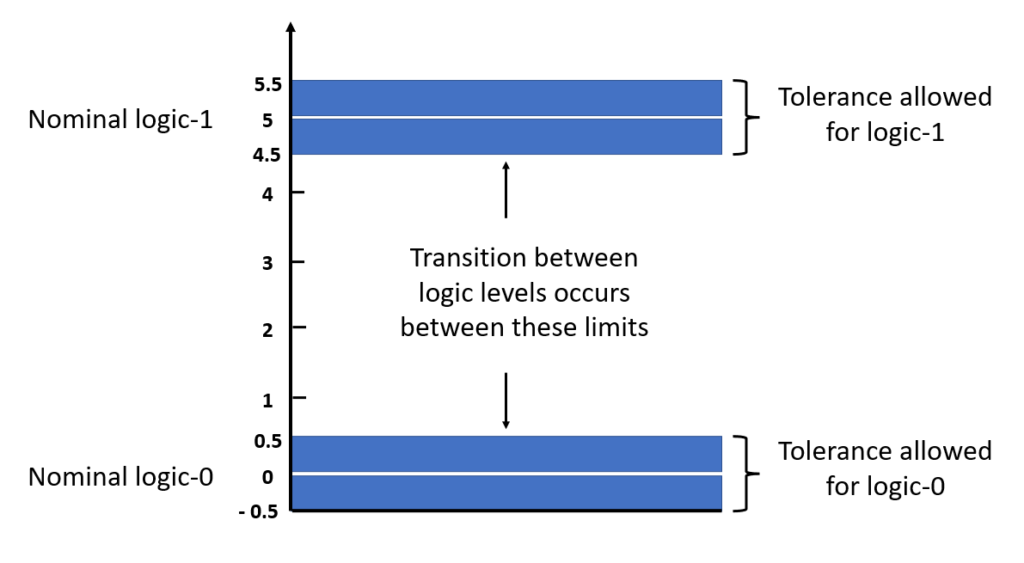In digital systems, any signal value is represented in binary form (either logic ‘0’ state or logic ‘1’ state). To represent these two logic states, two different levels of voltage or two different levels of current are considered. Here, we will consider voltage for understanding. You can also consider current in the same way.
If in a system, the higher value of voltage is considered as logic ‘1’ and the lower value of voltage as logic ‘0’, then the system is known as a positive logic system. Otherwise, if the lower value of voltage is considered as logic ‘1’ and the higher value of voltage as logic ‘0’, then the system is known as a negative logic system.
|
Remember, while designing a digital circuit, either go for a positive logic system or a negative logic system, but do not mix both in the same design. |
If the two voltage levels are 0 volts and +5 volts, then for the positive logic system, the +5 volts represents logic ‘1’, and the 0 volt represents logic ‘0’, as shown in the following figure. In the case of a negative logic system, the +5 volts represents logic ‘0’, and the 0 volt represents logic ‘1’.
In another case, If the two voltage levels are 0 volts and -5 volts, then for a positive logic system, the 0 volt represents logic ‘1’, and the -5 volts represents logic ‘0’. Similarly, in the case of a negative logic system, the 0 volt represents logic ‘0’, and the -5 volts represents logic ‘1’.
|
Note: The higher voltage (Vdd) of the circuit (for example, 5 V, 3.3 V, 1.8 V, 1 V, 0.9 V etc.) is decided based on the technology node used for the design. There can be multiple Vdd levels provided to different parts of the circuit depending on the design requirements. No matter how many different voltage levels are used, the whole system should be either a positive logic system or a negative logic. The tolerance levels for different logic levels are again decided based on the technology node used and different other design parameters. |
